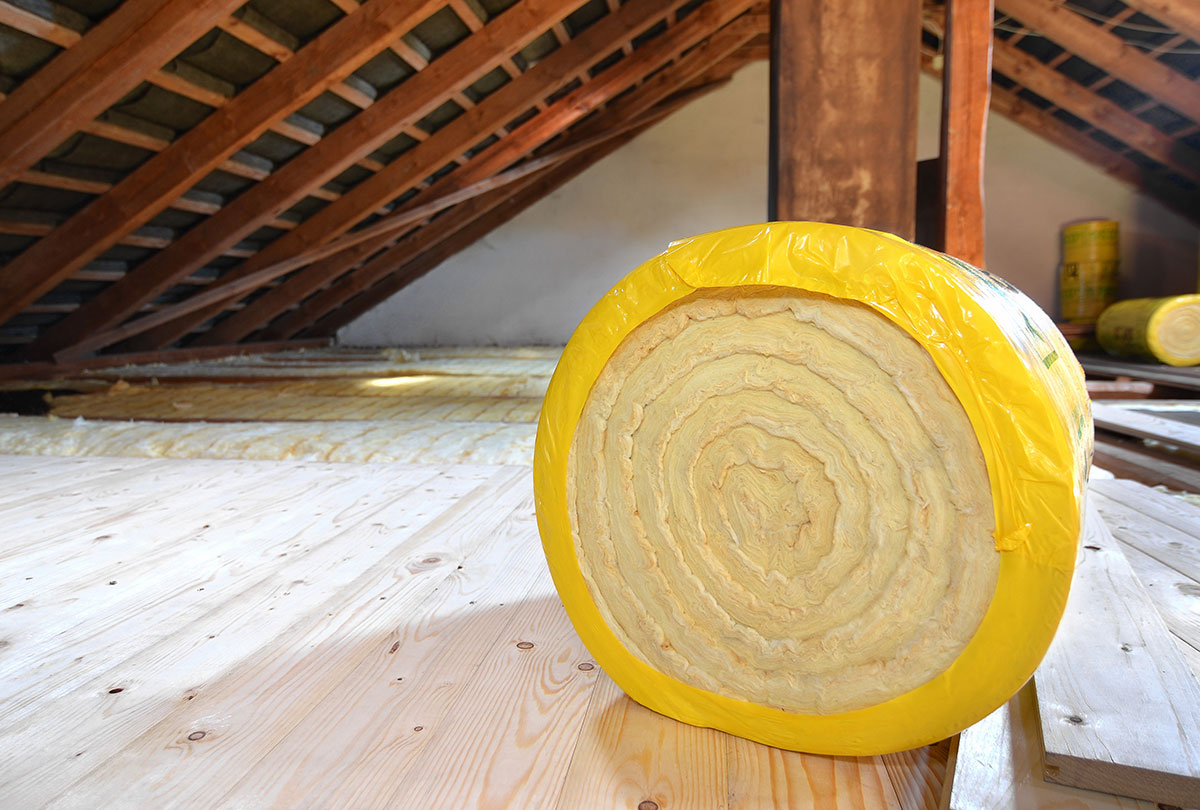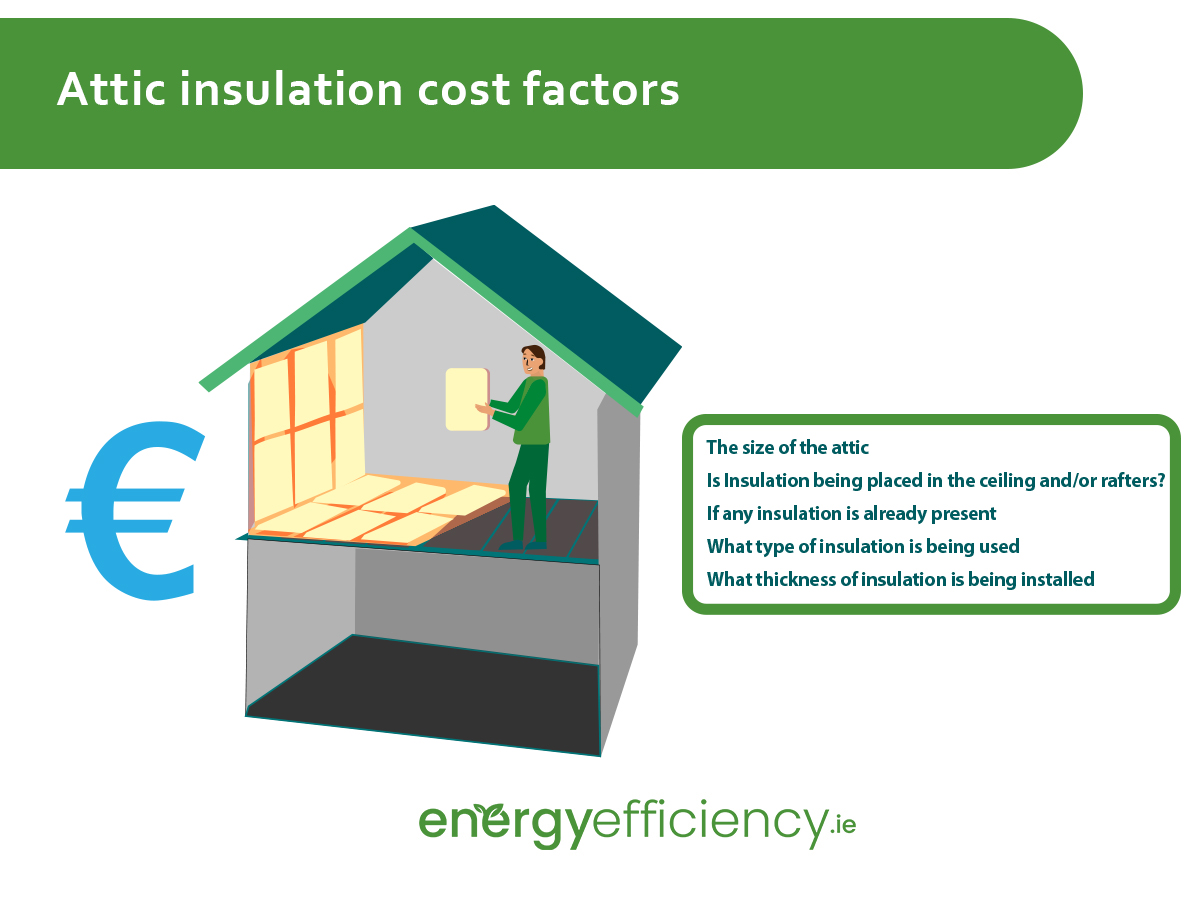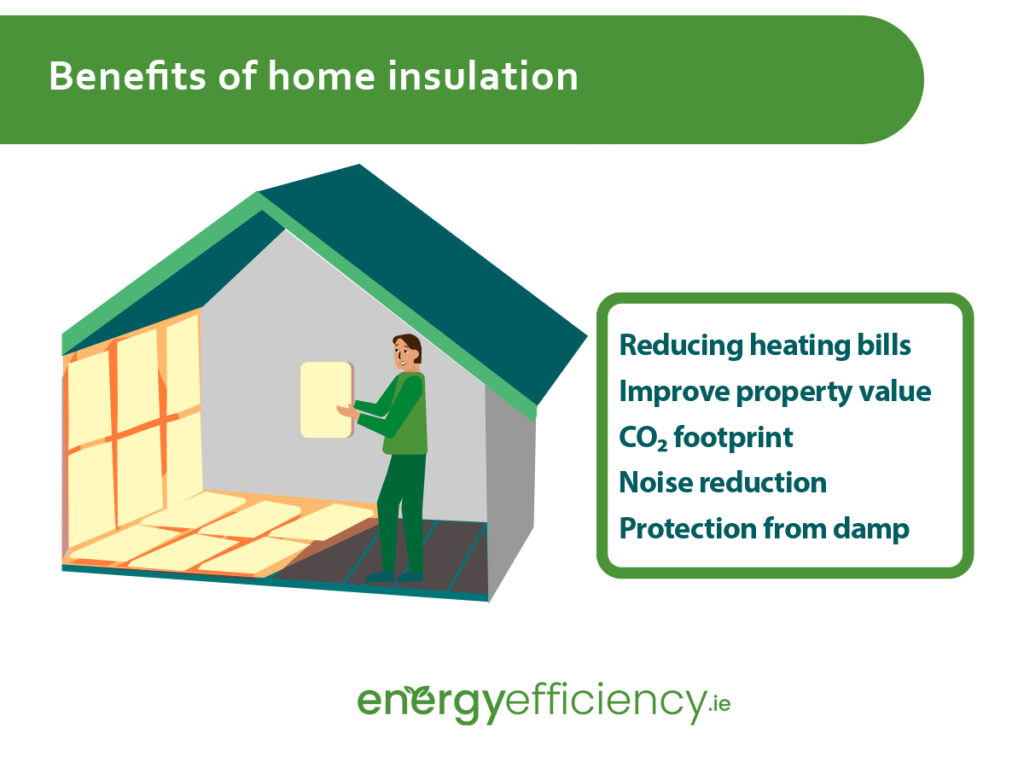Attic Insulation is the simplest and most cost-effective way to improve your home’s energy efficiency and save money on your heating costs.
As much as 25 – 30% of your home’s heat can escape through the roof, leading to needless expenditure to keep your house warm.
While many homes already come with some level of insulation in their attic, it can save you hundreds of euro each year by adding more and newer insulation to reduce heat loss.

The key takeaways:
Table of Content
What is Attic Insulation
Attic insulation refers to installing insulation in the ceiling or roof of your home to stop heat from escaping.
The insulation products primarily used for it today are mineral or sheep’s wool, rigid board (PID), or spray foam insulation.
Which type of insulation is best for your home will depend on the type of building you live in, the shape of the roof, and what you intend to use the attic space for.
There are two main ways to add insulation to an attic:
How much does attic insulation cost?
Getting loft insulation will typically cost between approximately €2,500 and €,5000 depending on the size of the attic. Spray Foam insulation is more expensive, costing up to €7,000 to add between the rafters of an attic.
The exact cost of your insulation will depend on the size of the attic space that is being insulated and the insulation products used.
The costs below, which do not include the SEAI grant, are only estimates, and the only true way to know what it will cost you is to get a quote.

| Attic Size | Insulation Type | Pre-Grant Insulation Cost |
|---|---|---|
| 45sqm | Loft Roll 200mm | €2,500 |
| Spray Foam 100mm | €2,600 | |
| 70sqm | Loft Roll 200mm | €3,200 |
| Spray Foam 100mm | €3,500 | |
| 100sqm | Loft Roll 200mm | €3,900 |
| Spray Foam 100mm | €4,700 | |
| 150sqm | Loft Roll 200mm | €5,100 |
| Spray Foam 100mm | €6,500 |
The final price will vary based on the type of home you live in, as different property types receive a different SEAI grant.
Other elements which can affect the cost of insulation can include:
Grants for Attic Insulation
An SEAI grant of up to €1,500 is available for loft insulation, and €3,000 for insulating your rafters to reduce the cost of getting insulation.
The size of the grant is dependent on the type of home you live in. The rafter insulation grant is only available through the One Stop Shop Scheme.
The grant is available for all homeowners and landlords as long as the property was built and occupied before 2011.
| Insulation Type | Grant Value |
| Loft Insulation | Apartment (Any) – €800 Mid-Terrace House – €1,200 Semi-Detached/End-Terrace – €1,300 Detached House – €1,500 |
| Rafter Insulation | Apartment (Any) – €1,500 Mid-Terrace House – €2,000 Semi-Detached/End-Terrace – €3,000 Detached House – €3,000 |
Best Ways to Insulate Your Attic
The two different ways to insulate your attic are with loft insulation on the ceiling joists or with rigid board or spray foam insulation at the rafter.
Which is best for you will depend on if the attic is going to be converted into a living space at any point as it will decide if the attic space itself is insulated or not.
Benefits of Attic Insulation
There are many benefits to getting attic insulation installed, such as lower heating bills, increased property value, improved comfort at home, and a reduced carbon footprint.

Should you get attic insulation for your home?
Whether or not it is worthwhile getting insulation installed will depend on the age of your home, what existing insulation there is, and how old that insulation is.
Many older homes will have some fibreglass insulation installed, typically about 100mm worth.
This will provide some protection, but it would benefit you to add another 200mm of mineral wool insulation on top of that, or to replace it with 300mm of mineral wool.
Attic Conversions
If you have converted, or are planning to convert your attic to a living space, then adding rafter insulation will help to regulate the temperature, keeping it warm in winter and cool in summer.
How Much Can You Save With Attic Insulation
Attic Insulation at either the loft or rafter, or both, can deliver massive savings on energy bills by reducing the amount of heat lost through the roof.
The exact amount of those savings will depend on the quality and thickness of the insulation installed, and what a homeowner’s heating bills are.
| Property Type | Heating Requirements | Heating Bill Reduction | Annual Savings |
| Apartment | 7,480kWh | 20% | €167 |
| 30% | €251 | ||
| Mid-Terrace | 7,699kWh | 20% | €172 |
| 30% | €258 | ||
| End-Terrace | 8,635kWh | 20% | €193 |
| 30% | €289 | ||
| Semi-Detached | 9,875kWh | 20% | €221 |
| 30% | €331 | ||
| Detached | 13,563kWh | 20% | €303 |
| 30% | €454 |
*Heating figures based on household gas consumption in 2020. Source Central Statistics Office
** Energy Bills calculated based on Bord Gais price of 11.17c per kWh with 2% discount









